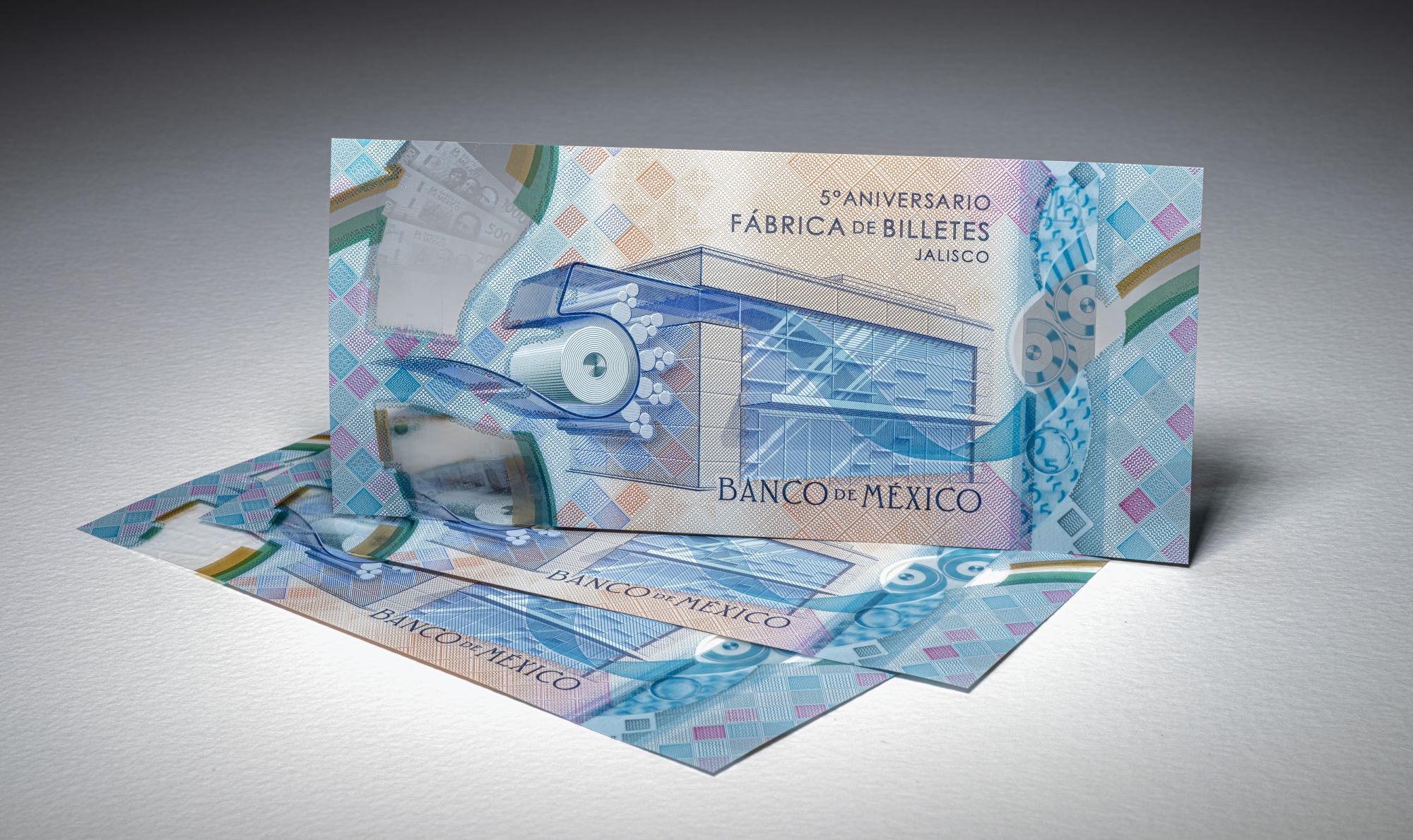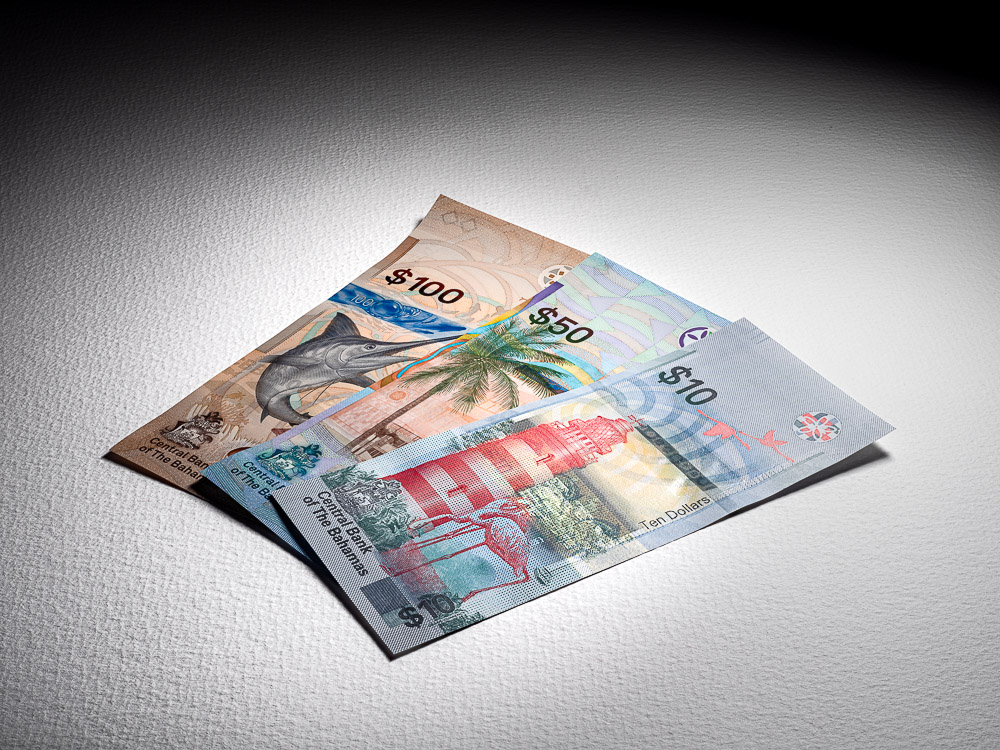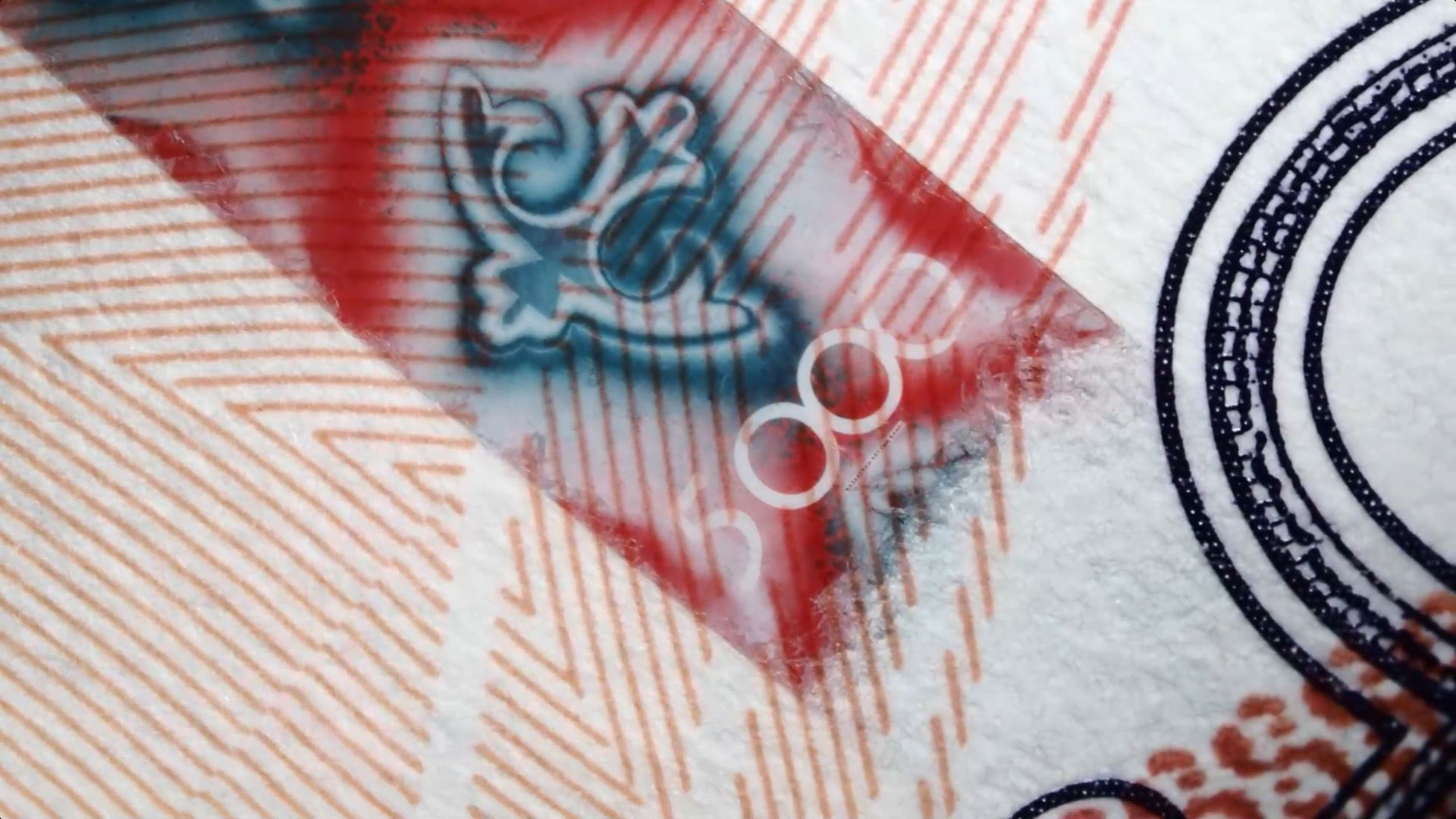Insights
Celebrating 20 Years of MOTION®
This article was first published in Currency News, May 2024.
It was 20 years ago that the micro-optics technology behind MOTION® first made its appearance – first at the Optical Document Security conference that year in San Francisco, and then a few months later at the Currency Conference in Rome. A year later, Crane Currency – already a thread manufacturer who had licenced the technology from its inventors (Nanoventions) – fully acquired the IP and unveiled its first commercial product, a security thread which it called MOTION. The following year, that thread made its debut in a circulating note – the Swedish 1,000 kronor.
MOTION was a game changing level 1 security feature. Hitherto, optically variable features had been limited to colour shift and diffraction but MOTION brought a third element to party – namely movement. It has, as a result, spawned a whole new generation of optically variable features for banknotes by the wider industry.

Currency News™ spoke to Crane Currency’s Eric Ziegler (VP of Global Markets, Product Growth and US Government) and Tod Niedeck (Marketing Director) about the background and foundations of MOTION, developments over the subsequent 20 years, and what the technology has meant both for company and for the security of banknotes more broadly.
Q: How did the micro-optics technology come about, and how did Crane come to acquire a licence to use the technology (and subsequently buy it)?
A: Crane and Nanoventions began transforming laboratory scale exemplars into a validated security feature about 21 years ago.
Nanoventions’ Mark Hurt and Rick Steenblik had developed ingenious approaches and wrote excellent IP on how to create synthetic images and the use of moiré magnification on a micron-scale suitable for use in banknotes. The difficulty in making the leap from prototypes to robust public security features cannot be underestimated. As an entirely new type of security feature, all aspects of production needed to be created and scaled.
Crane already held a leadership position in security thread innovation and manufacturing and this was key to the success of MOTION.
Q: Where did the name MOTION come from?
A: Karin Mörck-Hamilton and I (Tod) were working with the earliest first samples of what would become MOTION. These were delivered to us by Tim Crane, who at the time was the Crane’s Director of Business Development and one of the company’s leading security thread experts along with others like Paul Cote.
We wanted a name that was both simple and sensible. To those seeing the feature for the first time, its three-dimensional qualities were also striking and novel, but in the end it was the feature’s fluid movement that won it its name, MOTION.
Q: The first MOTION thread was for the Swedish 1,000 kronor. Was this used to launch MOTION as a thread technology, or did you expose MOTION to the industry prior to this?
A: Due to its novelty, MOTION micro-optics caught the attention of several central banks even before it first issued in the Swedish 1,000 kronor. Central banks that specified the feature right after Sweden provide a clue to those who were watching closely its development.
The US Bureau of Engraving and Printing and Board of Governors of the Federal Reserve System, Banco de México, Danmarks Nationalbank, Bank of Korea, to name a few, were all early adopters, for the most part securing their new high denomination banknotes with MOTION security threads.

Q: Did this response exceed your expectations? When did you realise that MOTION would have such an impact on the industry?
A: We didn’t find the success of MOTION surprising, but it took time. When something very, very new is launched, it’s not uncommon for there to be strong reactions, both proponents and strong opponents. New things, big changes to conventional approaches, elicit emotional responses.
It took a number of years for many in the industry to warm up to MOTION micro-optics, but by the time RAPID® was launched at the Banknote Conference in 2014, MOTION was well established.
We also knew how difficult it was to produce MOTION with consistently high quality. That was the cost of achieving a visual effect of a completely different origin. But it seemed to be exactly what central banks were looking for.
Additionally, we saw in MOTION micro-optics not just a feature, but a new technology platform.
Q: There have been a number of advances to the MOTION technology since then – both technically/optically and in terms of application (stripe, patch). Can you describe these?
A: The evolution of MOTION micro-optics continues with new visual effects and
feature forms.
RAPID, as noted earlier, was launched in 2014. It has smaller lenses displaying faster movement and lower angles of tilt. Also, its visual effects are registered. This allows us to create still easy to use, and yet difficult to simulate, movement effects that can be included in threads of 3mm in width or even narrower.
RAPID Detect (with an IR element for machine readability) followed in 2019 and then RAPID HD (with high colour definition). RAPID Vision, a machine-readable, multicolour version of high-definition RAPID was launched last spring (see end of article). That met with an enthusiastic response and it is specified in seven denominations already.
Meanwhile, we also launched a stripe version – MOTION SURFACE® – in 2018 that is suitable for both paper and polymer. It is applied in the printworks and offers all the advantages of MOTION lenses and ultra-micro printing, but over a larger area. We will soon be releasing a new version of MOTION SURFACE that can be applied across a large number existing application equipment both in printing works and paper mills.
Q: What has been the uptake of MOTION and subsequent derivatives? How important were the developments/ new designs and functionality in driving the market?
A: As part of a publicly traded company, Crane regularly announces the number of banknotes using its MOTION technology, that number is today at approximately 150 denominations and well over 50 countries.

The durability and high soil-resistance of RAPID security threads is well known in the industry, and more and more we’re seeing central banks extend the use of it into lower value denominations, eg. the 20 and 50 som banknotes just issued in Kyrgyzstan, and Ghana 5 and 10 cedis circulating since 2018 (these each have values of less than US$1). It’s notable that the particular designs of these RAPID security threads are in 2mm and 3mm widths.
Q: But didn’t you offer a specific product at one point – BREEZE® – for low denominations. What happened to this?
A: We still offer BREEZE, but what we have found is that it is akin to a learning vehicle, or an entry point, for discussions that almost inevitably lead to the decision to go for MOTION or RAPID instead.
BREEZE is available in a number of different colour and four different patterns, and it was developed as a lower cost option for the lower denominations.
But it isn’t customisable, and this aspect of our technology is very important to most of our customers, for whom icons of national symbols, for example, are very important as visual cues for public acceptance and authentication. Many central banks desire features that reinforce the overall design of the banknote. So what starts out as a conversation about secure movement effects and BREEZE more often than not ends up with the central bank deciding to go for one of our customisable options.
That said, there are a number of banknotes featuring BREEZE, and another one will be issued next month.
Q: Were you concerned when polymer began to have a significant impact as a substrate for banknotes that the demand for threads would decline?
A: As already noted, the technology isn’t just used for threads, but for surface applied features as well, and the first series of banknotes using MOTION SURFACE on polymer is already in the making.
We believe that central banks recognize that every type of substrate must be secured with overt public security features. No one today believes that a plastic or paper banknote of even modest value is fully secured by printing alone. We think your readers will appreciate the interesting work Banco de México presented at the Banknote Conference in fully customizing and integrating MOTION SURFACE into its polymer Jalisco House Note. As a reminder, they are a long-time user of MOTION and RAPID and a high-volume printer and issuer of three types of banknotes: 100% cotton, durable-paper and polymer.
For this reason, Crane continues to invest in its capabilities and capacity, as 150 denominations is about 15% of the world’s active denominations. MOTION and RAPID technology address the central bank demand for secure visual effects like no other.
This is why Crane is expanding its production capacity in Nashua in New Hampshire by nearly 60% this year.

Q: MOTION et al have been reserved for banknotes. But you also offer a variant for the brand protection market. Were you not concerned that this would dilute the perceived security value of MOTION?
A: Crane prioritized MOTION and RAPID as solutions for banknotes. That still dominates our thinking; however, Crane has been producing PROFOUND™ security films and labels since before MOTION was used in a banknote. Central banks, like companies and many consumers, are aware of the growing, global need for better product security.
This is a big change since MOTION was launched, and it is different in form and visual effects from what Crane provides to brand owners.
Q: Following on from that point, your parent company Crane NXT recently concluded the acquisition of OpSec Security, a leader in the brand protection sphere. Do you see any cross-over benefits for currency?
A: OpSec now sits alongside Crane Currency under a new business segment – Security and Authentication Technologies, and Sam Keayes will now be over both.
OpSec is clearly very complementary to what Crane Authentication provides to the product authentication market. But it’s very early days and we will be working together to see how to leverage our respective capabilities.
Q: How important is being a paper maker and a printer to introducing security features such as MOTION?
A: Scaling up production of the technology was a real challenge, and creating a robust product has taken years, with ups and downs along the way.
But one of the biggest advantages of having design, security feature development, papermaking and printing in one company is that we have been able to launch features that are fully ready for use in banknotes, that meet the security and production needs of the central bank and provide strong public engagement. MOTION, RAPID, and MOTION SURFACE provide that strong level of value, simultaneous security and ease of use.
As to commercialization, there are new features offered every year. Some look interesting, but what is their path to confident use by central banks to secure a national currency for years into the future? How are the risks identified and mitigated before these new features are specified? This is a major challenge that a vertically integrated company is well positioned to address.
We don’t think that any central bank should specify a new feature without extensive evidence that it is ready.
Q: Having said that, does the fact that you are a papermaker (and printer) limit the opportunities in terms of other papermakers and feature suppliers?
A: Not at all. The starting point is that central banks specify the feature (thread or MOTION SURFACE) and it’s up to the suppliers to make it happen. Not just us, but others too. We work with the industry’s leading printers and papermakers, and have qualified over 20 paper mills, including supplying sample materials to ensure that our features are integrated effectively and competitively.
Moreover, we proactively work with papermakers and substrate providers, their designers and central banks on the design, window patterns and approaches to integration to ensure that together we deliver the highest value to the central bank.

Q: You were making threads long before MOTION. Do you still produce other threads?
A: We do for US currency, but threads like colour shift are now commoditised, and demand is so high for our MOTION and RAPID threads that we need to focus on those.
Q: Crane is part of Crane NXT, as is CPI. Has this proved beneficial for the development of MOTION?
A: CPI has been instrumental in creating highly secure, machine-readable MOTION and RAPID Detect security threads. CPI is the far and away leader of point-of-sale currency validation, authenticating 4 billion transactions a week. CPI knows exactly what materials and sensor technologies are used, from POS validation and up every rung of the cash processing ladder including those at the central bank.
Q: And are there new technologies in the wings to partner or replace MOTION since it is nearing the end of patent protection?
A: Although the initial base patent is nearing the end of patent protection, this does not concern us greatly. Take for instance, the MOTION Switch thread used to secure the $100 banknote, the current series of Swedish banknotes, even the recently withdrawn British £50 note – these all use MOTION threads which have patents that extend into 2028, so there is some time still to go on these features’ published IP.
Furthermore, like many security feature technologies, MOTION is the product of a litany of materials and processes that are all trade secrets to Crane. MOTION remains still a very challenging feature to produce.
And as you might imagine, we have continued to invest well beyond the original MOTION offering and have a significant patent portfolio protecting RAPID, DETECT, MOTION SURFACE, and most recently, RAPID Vision.
Q: MOTION was revolutionary and has led to a large number of competitive alternatives. What is the next revolution likely to look like?
A: That’s a crystal ball question. Who knows! What seems assured is that central banks will demand features that are easy to use and very secure, difficult to simulate and counterfeit. Counterfeit resilience is one of the key attributes of the MOTION technology, as is ease of use, with its movement and the ability to be recognised in under two seconds. Not many other features can offer that.
Looking ahead, however, there is still much more that MOTION can provide in meeting these dual requirements.
Q: Finally, how important has the micro-optics technology been to Crane in the banknote market, and to banknote security more generally?
A: MOTION, RAPID and MOTION SURFACE – even Crane Currency – are synonymous with the security features the industry today refers to as ‘micro-optics’. That speaks to the importance the MOTION technology has had on Crane Currency and the industry.
That impact also extends into how banknotes are designed. The big trend in our industry now is the customization of feature effects for each central bank, and integrating those features into the overall banknote design. Crane’s micro-optic design software provides banknote designers with a user interface and refined tools to create visual effects linked directly to what is created during the manufacturing process.
It is this holistic approach, from design software to proprietary manufacturing processes that fuel innovations like the multicolour visual effects of RAPID Vision, and that’s just the first feature using the Vision technology.
Central banks can expect to see more from Crane Currency soon.
Combining Colour and Movement with RAPID Vision
Bahaa Al Sayegh, Commercial Director of Crane Currency, took delegates at the Banknote Conference through the benefits and attributes of RAPID Vision, the latest iteration of the company’s RAPID technology which was launched at the company’s Public First event in Malta last year.
Up until then, all the MOTION and RAPID micro-optics features have been in single colours, the security effects resting on the counter-intuitive movement of the graphics (icons). The key to RAPID Vision is that it exhibits different real time colour effects that are perfectly synchronised with the movement, micron by micron. This is a combination that has never been achieved before, says Crane, resulting in big, bold, unmistakable movement along with high contrast colour.

The main benefit is that the thread can be recognized even more quickly by the public. According to Bahaa, there are four key steps to public authentication – find, recognize, check and decide – all of which need to be achieved in well under 2 seconds. As tested and validated by Secure Perception Research, RAPID Vision knocks 160 milliseconds off the time taken to authenticate it.
RAPID Vision made its debut in Kazakhstan’s 5,000 tenge banknote, part of its new Saka series, which was issued in December last year. By the end of this year, four more denominations will include the feature.